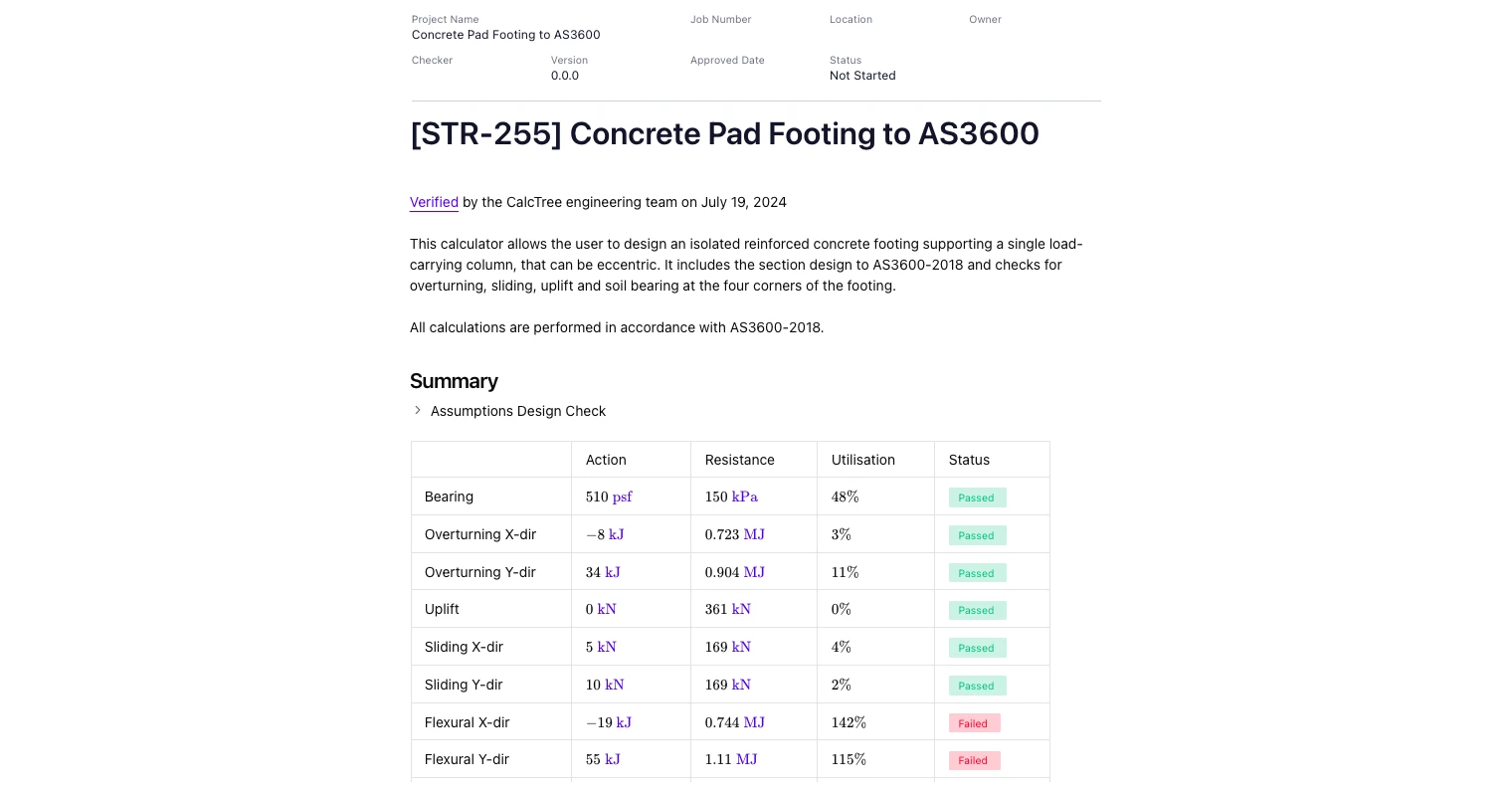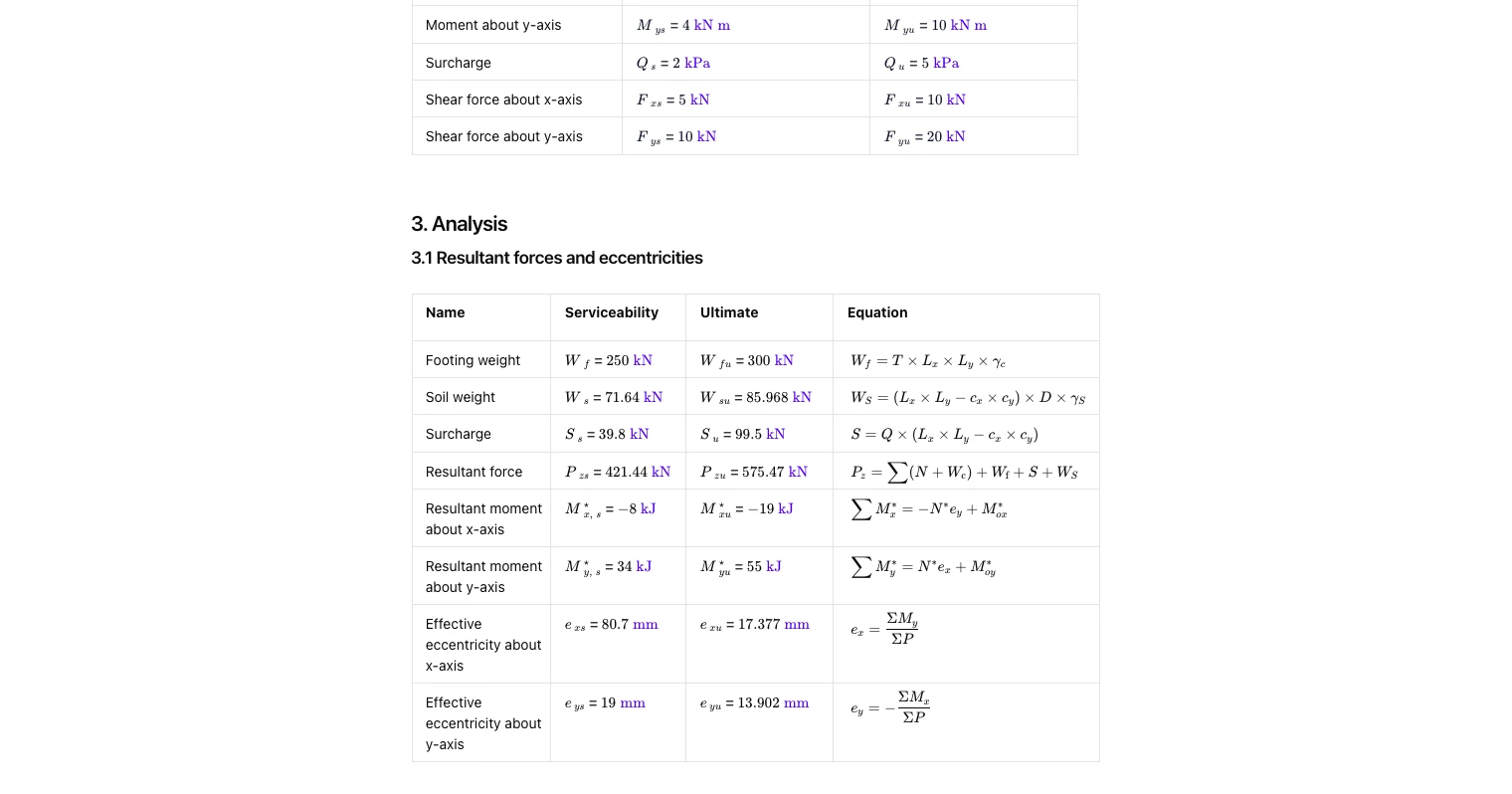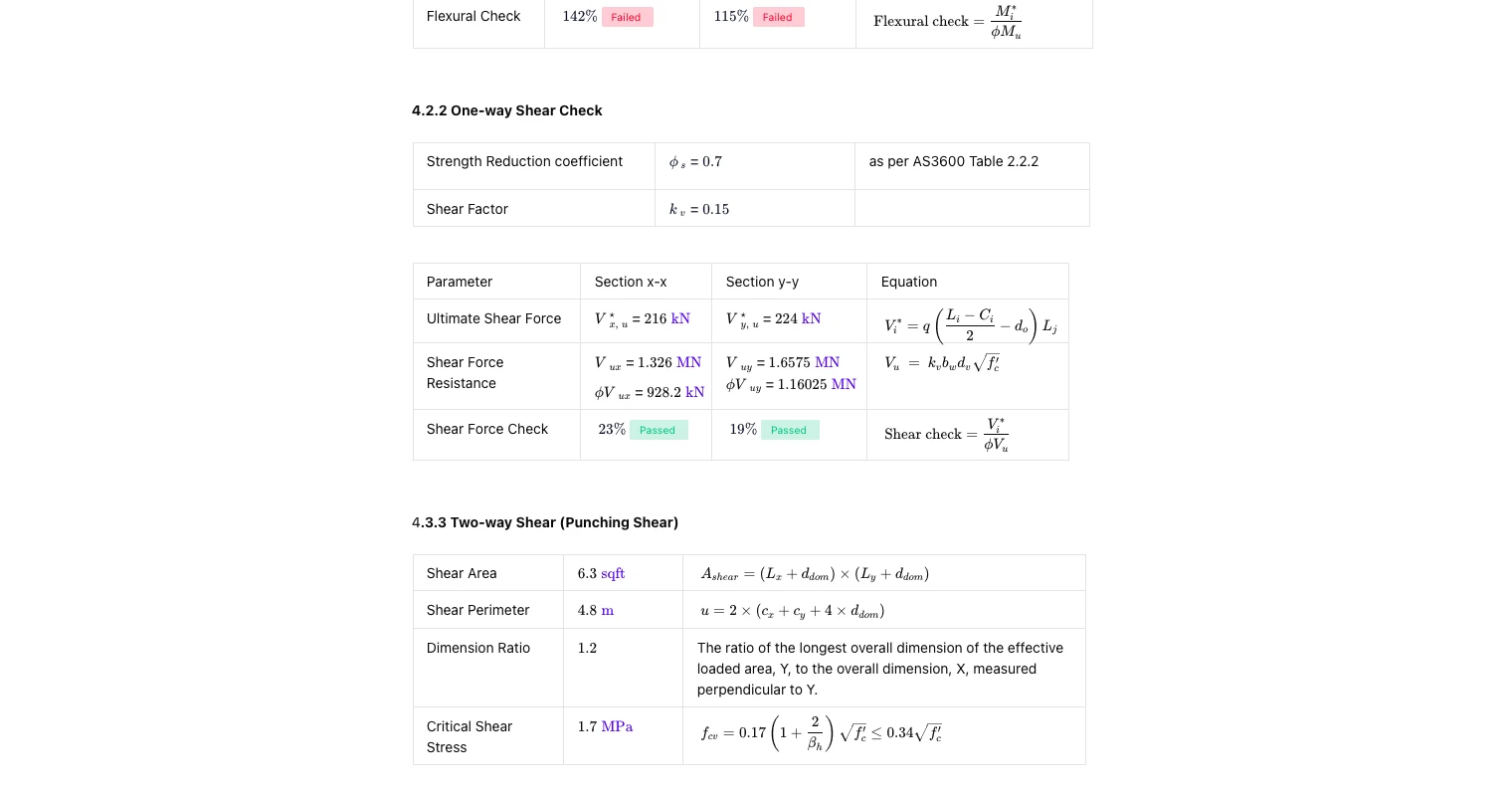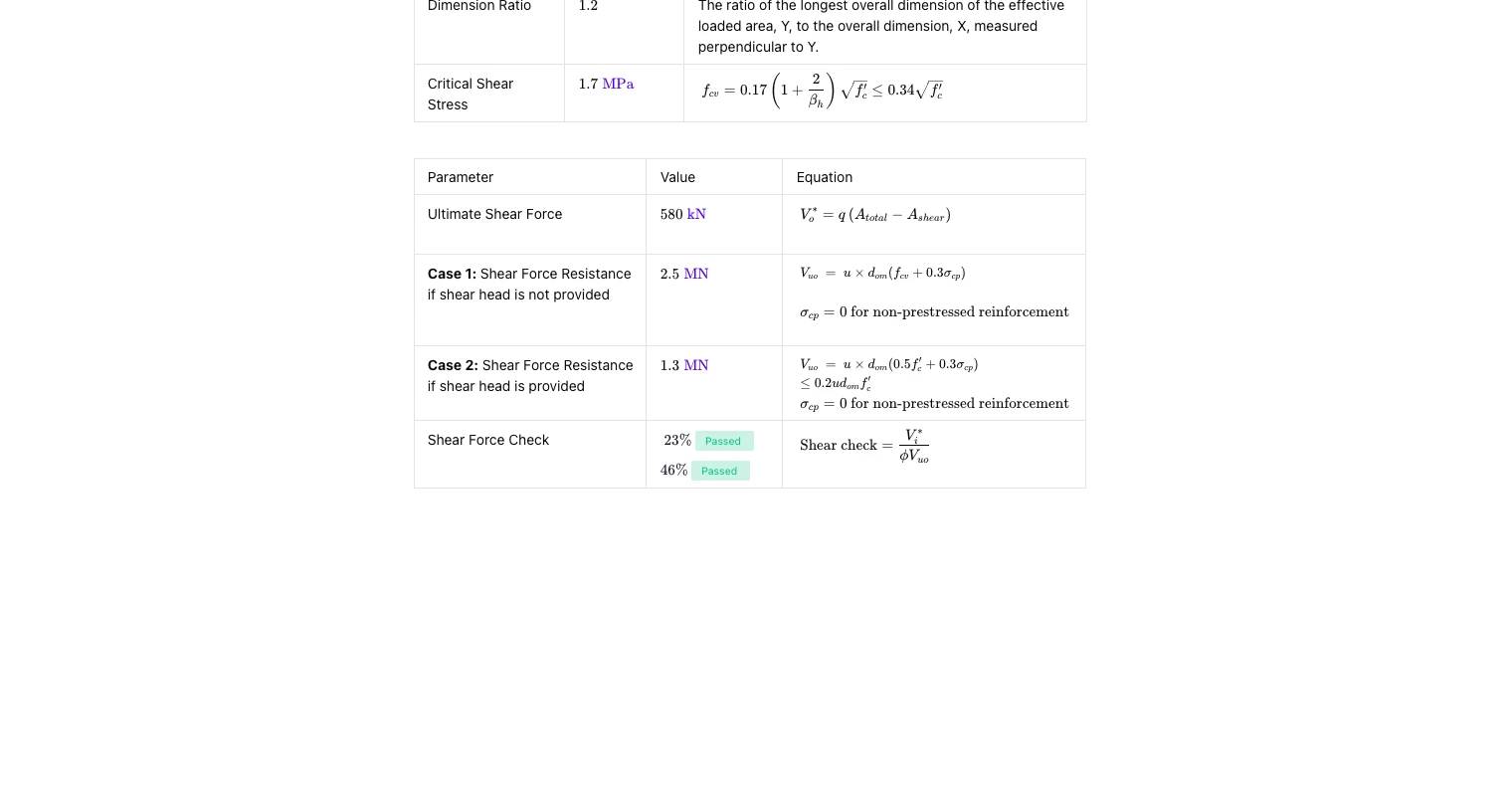Design concrete pad footings to AS 3600 with geotechnical and ULS checks in one place. Bearing, overturning, uplift, sliding, flexure, shear, punching.

This template is not available yet. You can sign up and create it yourself!
Or let us know if you'd like to be notified when it’s ready:
About this Concrete Pad Footing to AS 3600 Calculator
This template designs an isolated reinforced concrete pad footing supporting a single column (including eccentric loads). It follows AS 3600-2018 for section design and runs geotechnical stability checks.
- Structural engineer — size pad footings and confirm ULS flexure, one-way shear and punching shear before detailing.
- Geotechnical/temporary works engineer — verify bearing capacity, sliding, uplift and overturning factors with serviceability and ultimate actions.
- Design checker/peer reviewer — scan a single summary table of actions, resistances, utilisation and pass/fail to sign off faster.
Built on CalcTree’s engineering-grade workspace, this calculator is unit-aware, traceable, and ready to duplicate into projects. Open it here: Concrete Footing to AS 3600.
More on this Concrete Pad Footing to AS 3600 Tool
Inputs
Define materials (concrete strength and unit weight, reinforcement yield/elastic modulus), soil parameters (allowable bearing, unit weight, friction, active/passive coefficients), geometry (pad length/width/thickness, column size and offsets/eccentricities), cover and bar layout in both directions. Load cases include serviceability and ultimate: axial load, biaxial moments, surcharge and shear actions.
Analysis workflow
The template computes resultant forces and biaxial eccentricities, then determines stress distribution across the footing. It reports corner/point bearing pressures for SLS and ULS. Resultant moments include components from applied moments and any eccentric axial load.
Geotechnical design checks
Stability checks include:
- Bearing pressure vs allowable (utilisation ratio and pass/fail)
- Overturning about both axes using resisting weights and surcharge with a selectable factor of safety
- Uplift using footing/self weight and surcharge
- Sliding in both axes using friction and passive resistance with chosen safety factors
Structural (ULS) checks to AS 3600
- Flexural capacity in X and Y with strength reduction factors and rectangular stress-block parameters
- One-way shear in each direction with shear factors and concrete shear strength
- Punching shear around the column with critical perimeter, effective depth and options with/without shear head
Outputs
A single summary table shows actions, capacities, utilisation and status for bearing, overturning (x/y), uplift, sliding (x/y), flexure (x/y), one-way shear (x/y), and punching shear. Detailed tables display intermediate equations and assumptions for audit.
Common Calculation Errors to Avoid
- Forgetting eccentricity effects: neglecting column offsets or moment-induced eccentricity underestimates corner pressures and overturning demand.
- Using only axial load at ULS: not combining axial, biaxial moments, surcharge and shear will overstate capacity.
- Mixing SLS and ULS parameters: applying allowable bearing to ULS or strength-reduced concrete to SLS produces misleading utilisation.
- Ignoring passive resistance limits: assuming unlimited passive pressure can falsely pass sliding checks; use realistic coefficients.
- Incorrect effective depth: wrong cover/bar size entry skews flexure and punching results.
- Missing load cases: skipping uplift or low-tension cases can hide critical sliding/uplift conditions.
Engineering templates
Common calculators
Design guides
FAQs
What checks are included in this AS 3600 footing calculator?
Bearing pressure, overturning (x and y), uplift, sliding (x and y), ULS flexure (x and y), one-way shear (x and y), and punching shear with/without shear head, plus a clear utilisation summary.
Can I model eccentric columns and biaxial moments?
Yes. Enter column offsets and moments about both axes; the template computes resultant eccentricities and point stresses automatically.
Which standard is used?
Reinforced concrete design uses AS 3600-2018 parameters (stress-block, strength reduction factors). Stability checks align with common Australian practice using selectable safety factors.
What inputs do I need from geotech?
Allowable bearing pressure, soil unit weight, friction coefficient, and earth pressure coefficients for passive resistance. Include surcharge if applicable.
Can I copy this into a project and adapt it?
Yes. Duplicate the page, change inputs and reinforcement, and export the result.
Does it support reporting?
The summary and detailed tables are print-ready. Add headers, approvers and version info, then export as a professional report inside CalcTree.
Learn about the benefits of using CalcTree on engineering projects!














